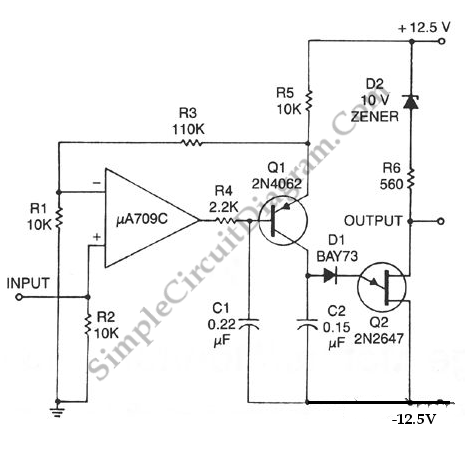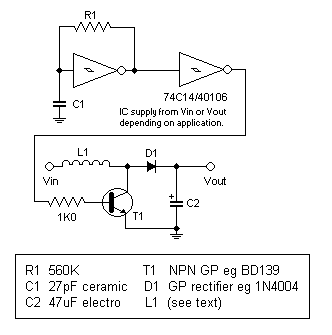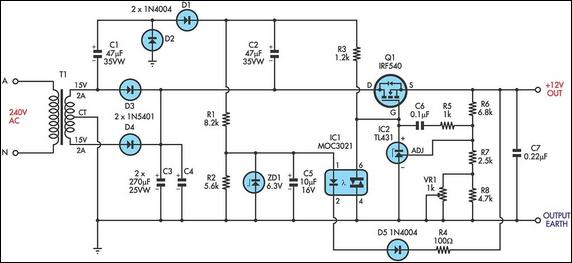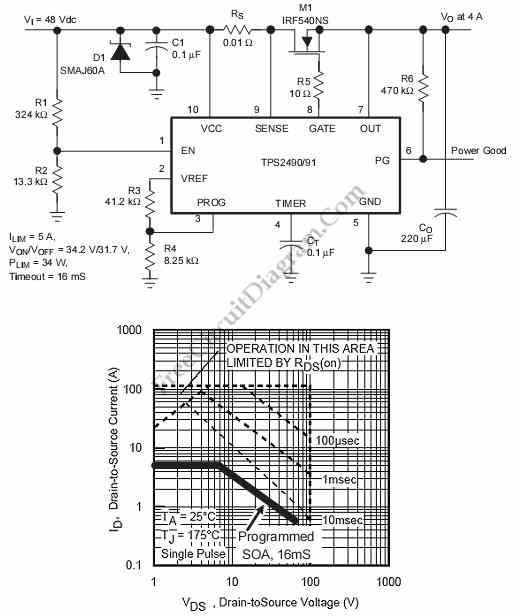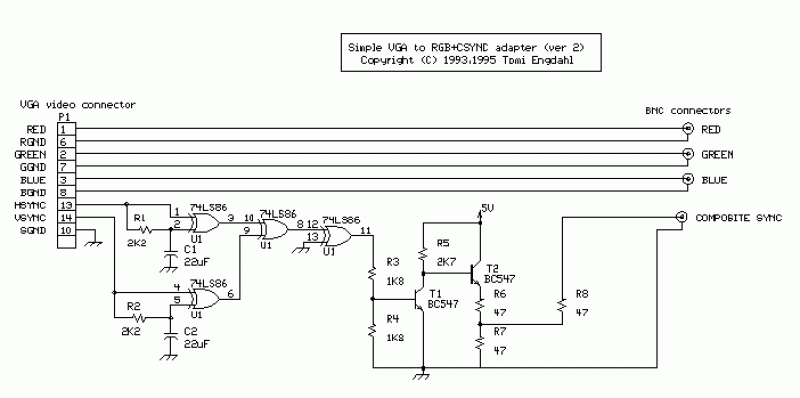
DC to AC Converter 12V to 220V Voltage Converter
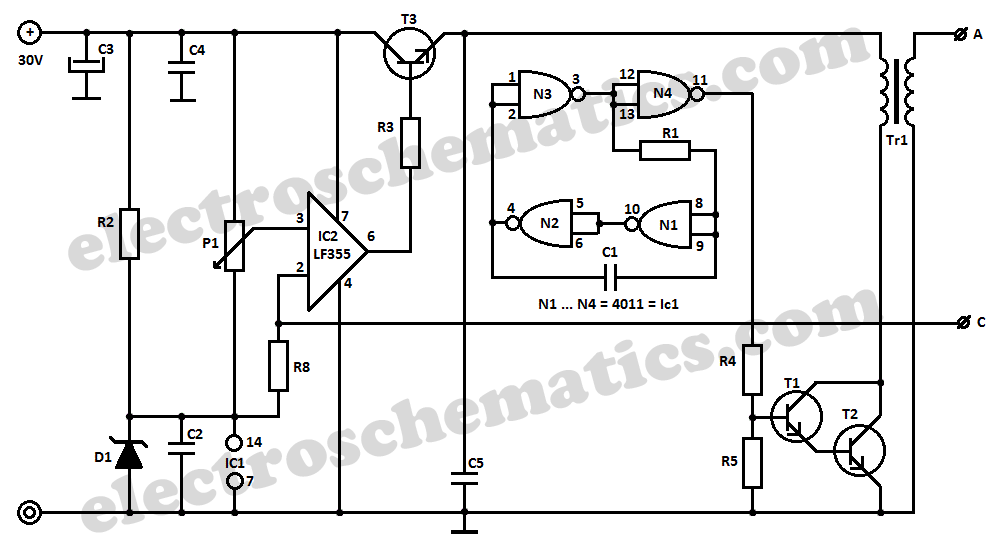
This DIY 12V to 220V DC to AC converter utilizes a CMOS 4047 as its main component, effectively transforming 12V DC into 220V AC.
The circuit design of this DC to AC converter primarily revolves around the CMOS 4047 integrated circuit, which functions as an astable multivibrator. This configuration generates a square wave output, which is essential for the conversion process. The output frequency can typically be adjusted based on the external resistors and capacitors connected to the IC, allowing for flexibility in the output waveform.
The conversion begins with the input of 12V DC, which is supplied to the CMOS 4047. The IC generates a square wave at a frequency that can be set between 50Hz to 60Hz, depending on the application requirements. The square wave output is then fed into a transformer, which steps up the voltage from 12V to 220V AC. The transformer must be rated appropriately for the power requirements of the load that will be connected to the output.
Additionally, the circuit may include components such as diodes for rectification, capacitors for smoothing the output, and possibly a filter to reduce electromagnetic interference. It is crucial to ensure that all components are rated for the voltages and currents they will encounter during operation to maintain safety and reliability.
In summary, this DIY converter is a practical solution for applications requiring a 220V AC supply from a 12V DC source, with the CMOS 4047 providing an efficient and adjustable means of generating the necessary AC waveform. Proper attention to component selection and circuit design will ensure effective performance and safety in operation.This DIY 12V to 220V DC to AC converter is built with CMOS 4047 that is the main component of this small voltage converter that transforms a 12VDC into 220.. 🔗 External reference
The circuit design of this DC to AC converter primarily revolves around the CMOS 4047 integrated circuit, which functions as an astable multivibrator. This configuration generates a square wave output, which is essential for the conversion process. The output frequency can typically be adjusted based on the external resistors and capacitors connected to the IC, allowing for flexibility in the output waveform.
The conversion begins with the input of 12V DC, which is supplied to the CMOS 4047. The IC generates a square wave at a frequency that can be set between 50Hz to 60Hz, depending on the application requirements. The square wave output is then fed into a transformer, which steps up the voltage from 12V to 220V AC. The transformer must be rated appropriately for the power requirements of the load that will be connected to the output.
Additionally, the circuit may include components such as diodes for rectification, capacitors for smoothing the output, and possibly a filter to reduce electromagnetic interference. It is crucial to ensure that all components are rated for the voltages and currents they will encounter during operation to maintain safety and reliability.
In summary, this DIY converter is a practical solution for applications requiring a 220V AC supply from a 12V DC source, with the CMOS 4047 providing an efficient and adjustable means of generating the necessary AC waveform. Proper attention to component selection and circuit design will ensure effective performance and safety in operation.This DIY 12V to 220V DC to AC converter is built with CMOS 4047 that is the main component of this small voltage converter that transforms a 12VDC into 220.. 🔗 External reference
